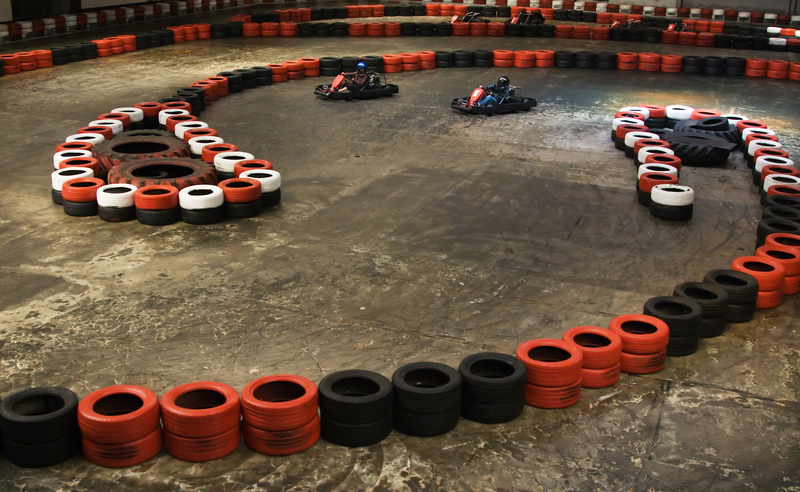Master the Craft of Upcycling by Converting Useless Items Into Practical Gems
Upcycling has emerged as an inspiring movement for creative minds and eco-conscious individuals alike. In a society grappling with excessive waste and environmental challenges, giving a second life to items once considered "useless" is both a fulfilling hobby and a sustainable practice. This comprehensive guide will help you master the craft of upcycling by turning forgotten treasures into practical, beautiful, and unique gems for your home, garden, or daily life.
What is Upcycling? Understanding the Art and Its Benefits
Upcycling refers to the creative process of transforming unwanted or discarded materials into new products that serve a practical purpose or offer artistic value. Unlike recycling, which often breaks down materials for re-manufacturing, upcycling preserves or enhances the original item's value. This innovative art form is environmentally friendly, reduces landfill waste, and encourages a mindful approach to consumption.
The Difference Between Upcycling and Recycling
- Recycling destroys materials to create new raw substances (e.g., plastic, paper, glass).
- Upcycling transforms existing items directly, maintaining their integrity while adding user or aesthetic value.
For example, recycling an old t-shirt may produce new textile fibers, while upcycling that same shirt could turn it into a stylish tote bag or decorative wall art.

Why Mastering Upcycling is Worth Your Time
- Environmental Impact: Reduce landfill waste and lower your carbon footprint.
- Cost-Effective: Save money by reusing what you already have.
- Creative Outlet: Express yourself with unique DIY creations.
- Personalization: Customize practical items to fit your style and needs.
- Skill Development: Enhance your crafting, problem-solving, and design skills.
Through upcycling, not only do you contribute positively to the planet, but you also enjoy the thrill of creativity and the pride that comes from crafting something new and useful from something old and forgotten.
Essential Tools and Materials for Upcycling
You don't need a massive workshop to start upcycling. Most projects can be tackled with basic tools and ordinary materials found around your home or in local thrift stores.
Must-Have Tools for Upcycling Projects
- Scissors and craft knives
- Hot glue gun and sticks
- Measuring tape
- Screwdrivers, pliers, and small hammer
- Paints, brushes, and sandpaper
- Needle and thread (for sewing-based upcycling)
- Safety equipment (gloves, goggles)
Commonly Upcycled Materials
- Glass jars and bottles
- T-shirts and old clothing
- Wooden pallets and crates
- Furniture pieces
- Plastic containers
- Sheets of paper, magazines, and books
- Electronics and metal scraps
Step-by-Step Guide: How to Start Your Upcycling Journey
Upcycling junk into practical gems might seem intimidating at first, but anyone can do it with the right mindset and approach. Here's how to get started:
1. Identify Items Ready for Upcycling
Walk around your home and identify objects that are no longer serving their intended function. Look for:
- Worn-out furniture pieces
- Old clothes or shoes
- Busted electronics
- Empty glass or plastic containers
- Torn books or magazines
2. Brainstorm Practical Uses
Think about what you need or what would help organize your home. Common upcycle ideas include:
- Storage units from crates or boxes
- Planters from bottles or cans
- Art pieces from scrap metal
- New clothing or accessories from old fabric
3. Design and Plan
Sketch out your ideas or search for inspiration online. Consider:
- The practicality and functionality of your new item
- The steps and materials needed for transformation
- Your skill level and available tools
4. Get Crafting!
With your plan in hand, gather your tools and get to work. Remember to:
- Work safely (wear gloves, goggles, and a mask if necessary)
- Follow instructions (if using tutorials)
- Be patient--upcycling is as much about the process as the result
Creative Upcycling Project Ideas for Every Skill Level
Beginner Projects
- Mason jar organizers: Reuse glass jars to store craft supplies, utensils, or bathroom items.
- T-shirt tote bags: Turn old tees into reusable bags with just a few cuts and knots.
- Wine cork bulletin board: Glue together used corks for a handy message board.
- Book page art: Frame interesting pages from damaged books for literary-inspired wall decor.
Intermediate Projects
- Drawer plant boxes: Convert obsolete drawers into garden planters or under-bed storage.
- Pallet coffee tables: Sand and paint wooden pallets for rustic, eco-friendly furniture.
- Sweater pillow covers: Upcycle old sweaters into cozy, textural pillowcases.
- CD mosaic coasters: Break old CDs into shards and create shimmering coasters.
Advanced Upcycling Ideas
- Bathtub couches: Transform a clawfoot tub into a chic garden seat or indoor sofa.
- Bicycle wheel clocks: Repurpose an old bike wheel as a striking wall clock.
- Ladder shelving units: Upcycle a wooden ladder into trendy bookshelves or plant stands.
- Electronics turned lamps: Turn outdated tech (like old cameras or radios) into quirky desk lamps.
Top Tips to Master Upcycling Like a Pro
- Start small - Build confidence and skills with easy projects before tackling complex transformations.
- Focus on functionality - Choose ideas that will be useful and valuable in your everyday life.
- Experiment with different materials - Don't limit yourself to just one medium; mix materials for eclectic vibes.
- Find inspiration - Follow upcycling blogs, watch YouTube tutorials, and join DIY communities for new ideas.
- Don't fear imperfections - Upcycled items have charm because of their uniqueness--even "mistakes" become features.
Transforming Useless Trash Into Practical Gems: Inspiring Real-Life Examples
People worldwide are mastering the craft of upcycling by breathing new life into the most unexpected items. Take inspiration from these real-world upcycling success stories:
- A pair of entrepreneurs created a chic cafe with furniture made entirely from old doors, windows, and scrap lumber. What would've been landfill waste now serves hundreds of guests every month.
- An artist in Brazil amassed a collection of thousands of plastic bottles and assembled dazzling outdoor sculptures, highlighting the importance of creative waste management.
- Homeowners turned an abandoned, rusted shipping container into a fully functional studio apartment, modernized with reclaimed wood and upcycled fixtures.
Your journey to upcycling mastery starts the moment you look at "useless" objects with fresh eyes. Every worn-out item is a blank canvas for creativity.
Common Challenges and How to Overcome Them
- Lack of Time? Focus on quick, weekend-friendly projects that don't require intensive labor or specialized tools.
- Short on Inspiration? Browse Pinterest and Instagram under hashtags like #upcyclingideas or #trashtotreasure for endless creative sparks.
- No Crafting Experience? Watch beginner tutorials, start simple, and remember--every expert began as a novice!
- Limited Materials? Host a material swap with friends or visit local thrift stores and flea markets for amazing finds.
Frequently Asked Questions About Upcycling
1. Is upcycling really sustainable?
Yes! Upcycling extends the lifespan of materials, reduces the need for new resources, and cuts down on waste. It's one of the most environmentally friendly habits you can adopt.
2. Can I sell my upcycled creations?
Absolutely. Many successful brands and artists started by selling upcycled furniture, jewelry, and decor on platforms like Etsy, eBay, and local craft fairs.
3. Do I need special skills to start?
No prior experience is needed for many upcycling projects. Over time, you'll naturally develop a toolbox of skills in sewing, woodworking, painting, and more!
4. What items upcycle best?
Look for durable, versatile items: glass jars, sturdy fabrics, wood pieces, and metal odds-and-ends are particularly easy to reimagine and repurpose.
Upcycling for a Better World: Join the Movement
Mastering the craft of upcycling isn't just a personal journey--it's a lifestyle that benefits communities and the planet. School groups, nonprofits, and artists worldwide are joining the upcycling movement to foster sustainability, reduce waste, and spark creativity in everyday living.
- Start an upcycling club at your school or workplace!
- Volunteer at local upcycling workshops.
- Share your creations on social media to inspire others.

Final Thoughts: Your Path to Upcycling Mastery
Learning to convert trash into treasure is a journey of imagination, resourcefulness, and environmental stewardship. Whether you turn a plastic bottle into a vertical garden or transform a tattered chair into a work of art, each step helps you master the craft of upcycling--and creates a positive ripple in the world.
Embrace the power of transformation. Look around you, pick an item you'd otherwise discard, and reimagine its potential. You'll be amazed at how even the most ordinary objects can become practical gems with a little ingenuity, and you'll contribute to a brighter, cleaner, more creative planet for generations to come.
Start Today: Your Upcycling Adventure Awaits!
Are you ready to master the art of upcycling? Gather your tools, tap into your creativity, and begin converting useless junk into practical, dazzling gems that express your unique style and make a real impact.
The possibilities are endless--so let your imagination guide you, and transform your "trash" into tomorrow's treasures!